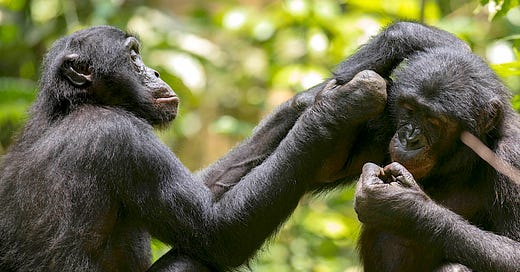Bonobo Behavior Reveals Ancient Origins of the 'Common Enemy Effect'
Insights into Group Cohesion & Conflict Resolution in Early Human Evolution
In response to external threats, species ranging from humans to chimpanzees and other animals often close ranks, reinforcing bonds within their groups. This phenomenon, known as the "common enemy effect," has long been recognized as a strategy for survival in the face of group-based competition. A recent study1 by an international team led by Kyoto Unive…
Keep reading with a 7-day free trial
Subscribe to Primatology.net to keep reading this post and get 7 days of free access to the full post archives.



